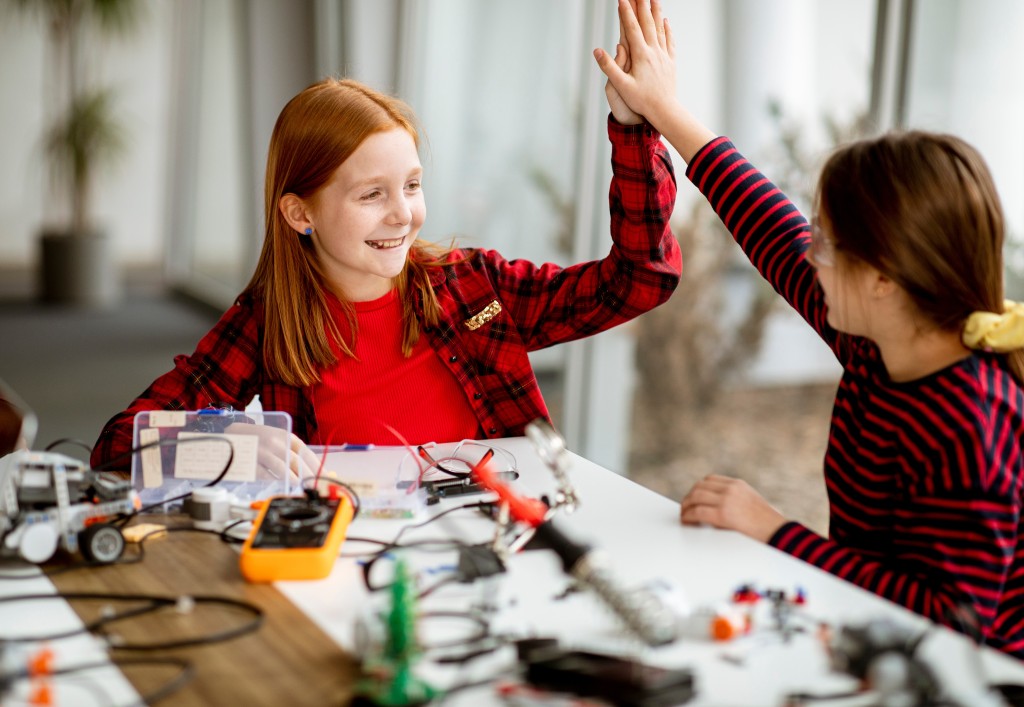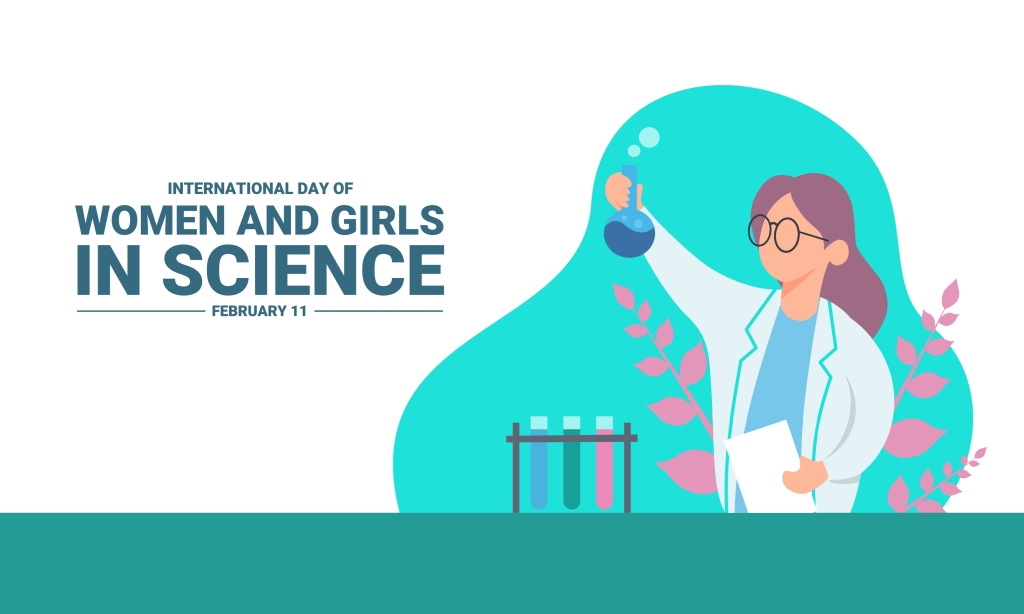Last month, the world celebrated the 7th annual International Day of Women and Girls in Science (IDWGS). I was honoured to be featured by my institution for my work in fostering the natural curiosity of young girls through our fun video series, among other initiatives. I LOVE talking and doing science with kids, so getting the opportunity to share this passion more widely is fantastic. But today, on International Women’s Day (IWD), I find myself struggling to ‘celebrate’. I HATE that, in 2022, we still need an international day to shine a light on the lack of gender equality in so many fields, including science.
A little over 30 years ago, I graduated from high school in Toronto and headed off to university to study science. My strongest marks by far were in physics and math, but all my teachers ever focused on when giving career advice was medicine or nursing: no one suggested I pursue physics or engineering. Being a little contrary, I decided to give the applied physics program a go, telling myself I could always switch out if it proved too difficult. After all, girls didn’t do physics or engineering 30 years ago, it was almost exclusively a boys’ club back then.
Fast forward 30 years and here’s the incredibly depressing thing – the statistics haven’t changed. Physics, math, and engineering are still boys’ clubs.
How significant is this stagnant imbalance? Comparing StatsCan census data on post-secondary qualifications by field of study, we find that the percentage breakdowns by gender in every STEM (science, technology, engineering, and math) category have barely changed from 1996 to 2016:

More recent data from colleagues at the University of Guelph (2019) demonstrate that we lose women from physics and engineering at just about every step of their secondary schooling in Ontario:

It’s not like we’ve had our collective heads stuck in the sand for three decades. There are scores of non-profit organizations in Canada that have worked for 20 or 30 years to increase the number of students pursuing the STEM disciplines at the post-secondary level. These organizations all recognize the ongoing lack of women in certain disciplines, and countless programs have sprung up in response.
Some progress has been made, as seen in tracking what happens when we ask children to ‘draw a scientist’: the percentage of girls drawing a female scientist has increased substantially over a 50-year period. But we still have a lot of work to do, as both girls and boys are more likely to draw a male scientist as they get older:


Why does this matter? Because men don’t have a monopoly on curiosity and wonder. Spend some time in a kindergarten classroom and you’ll see that the girls are just as inquisitive about how the world works as the boys. Somewhere along the way, the boys get the message that physics and engineering are the fields in which to explore this curiosity and girls find themselves heading towards health-related fields. I’m furious that we still find ourselves here, 30 years later. The definition of insanity is doing the same thing over and over again and expecting a different result. Something must change.
And let’s deal with the elephant in the room right now: yes, girls are just as capable of understanding physics as boys are. Data from standardized exams in the UK as recently as 2018 show that 30% of the girls writing the A-level physics exam earned the highest two grades possible compared with 29.5% of the boys who wrote the same exam. But just like Canadian students, the numbers are hugely skewed: 8300 girls wrote that exam compared to 29,400 boys, i.e. 22% vs. 78%. Sound familiar? I cite the UK data for two reasons: 1) the standardized nation-wide exam gives us large n statistics to look at and 2) the Institute of Physics (IOP) seems to be lightyears ahead of other national professional organizations in championing this issue and aggressively seeking solutions.
The IOP is currently running a suite of gender balance programs, building upon decades of research into the issue. The main conclusion so far seems to be that tinkering around the edges by working with individual teachers or even whole science departments in specific schools doesn’t move the needle. However, effective change has been achieved in pilot projects that holistically tackle the culture of schools from early-learning centres through to secondary schools.

One pilot project worked on improving the confidence of 13 and 14-year-old girls directly and worked with physics teachers on best practices for inclusive teaching techniques, while simultaneously taking a whole-school approach in working with leaders, teachers, and students across all subjects on gender equity. This project saw the number of girls starting A-level physics (at age 16, comparable to our Grade 11) increase by a factor of three over a two-year period.
Change is possible if we are prepared to look in the mirror and recognize that we are failing our students by tinkering around the edges. STEM-themed summer camps and after-school programs for girls are great, as are targeted scholarships for women in postsecondary studies, but they tend to reach the minority who manage to maintain their passion for the discipline despite the structural biases working against them. Let’s follow the lead of our UK colleagues and recognize that systemic change, from kindergarten to graduate school and beyond, is the only way to truly address this decades-long issue, before another 30 years goes by and my grandchildren are facing the same obstacles. In the words of Marie Curie, progress is neither swift nor easy. But when it comes to gender equity in science, it is long overdue.

References:
50 Years of Children Drawing Scientists by Youki Terada in Edutopia, May 2019
Closing the Gender Gap in Engineering and Physics: The Role of High School Physics by Mary Wells, Martin Williams, Eamonn Corrigan, and Valerie Davidson for the Ontario Network of Women in Engineering, December 2018
Women in physics: Why there’s a problem and how we can solve it by Valerie Jamieson in New Scientist, November 2018


